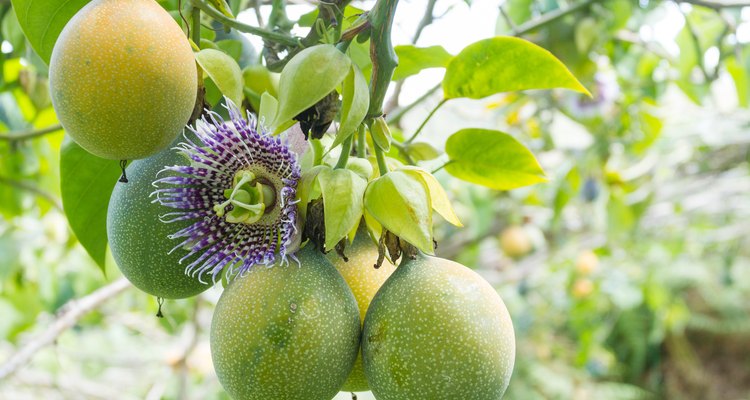
alexander ruiz/iStock/GettyImages
One taste of the maypop passion fruit (Passiflora incarnata) and your taste buds will start to sing. Ready to savor when it turns from a bright green color to a yellow-orange, this antioxidant-rich purple fruit contains 15 to 20 calories, has heart-healthy benefits, and is a good source of fiber and vitamin C.
The maypop got its name because of the loud "popping" sound it makes when stepped on. Eaten alone or combined with other fruits, poultry, vegetables or milk, the maypop is a special treat enjoyed from late summer through fall.
Finding Your Passion
The maypop passion fruit grows in U.S. Department of Agriculture plant hardiness zones 5 through 9 and is native to the eastern United States. Because it's a native, you could encounter passiflora incarnata fruit while out in nature. If you see some and decide to grab an impromptu snack, make sure you know what you're eating.
As grassland biome plants, you'll find maypop passion fruit plants growing in sunny or partly shaded areas in low woods and open areas. Mature plants are 6 to 8 feet tall with a spread of 3 to 6 feet. You can identify a maypop by its three-lobed leaves and 2.5-inch flowers which feature white petals and a purple crown. These showy blossoms appear on the plant from July to September.
Once you've identified the plant, make sure you eat only the fruit. Unlike some other members of the passion flower family, the maypop doesn't contain cyanide and isn't poisonous. The leaves, stems and flowers of the plant aren't considered to be edible, however, and probably aren't very tasty.
Maypop Must-Know
The maypop grows abundantly in sunny areas such as Hawaii, California and Florida, but you'll also find them as far north as Pennsylvania, west to Kansas, south to Texas and in Bermuda. When the fruit forms, from March through September, it falls to the ground when ripe. Harvesters collect the ripe fruit and put them in boxes with adequate air circulation. However, if you pick the fruit from a tree, make sure your selection has slightly wrinkly skin and is light-green to yellow-orange in color for the best taste.
Store it in a cool, dry spot for no more than a week or two.
Munching on the Maypop
The maypop's green skin is edible raw, but it's not a popular choice as too many can cause burns in your mouth. Better options include cooking the rind or simply eating the inside of the fruit and discarding the shell.
To do so, wash the outside peel with soap and water, and rinse it thoroughly. Cut the fruit in half lengthwise and then simply take a spoon and scoop out the seeds and jelly-like insides. You can either eat the seeds or strain them out through a cheesecloth. Purdue researcher Julia F. Morton describes the maypop's flavor as "appealing, musky, guava-like and sub-acid to acid."
Loving the Liquid
After scooping out the insides of the maypop, add some water and orange or pineapple juice to a blender. Sprinkle in some sugar to taste. Add some more fruit, a few ice cubes and the insides of the maypop. Blend for a minute and then enjoy a nutritious cold drink.
You can also make a simple syrup by adding the insides of the maypop to a pan with sugar and water. Boil and reduce until it forms into a tasty sauce for candy, ice cream, cake filling or cold fruit soup.
Spreading the Love
Another tasty way to eat maypop is to add water, sugar and pectin to it, and then spread the fruit on toast or a biscuit as you would jelly. You can also mix it into another spread, such as cream cheese, to give the cheese a slightly fruity flavor and to reap the antioxidant benefits.
To make a relish with tomatoes and peppers, chop them and then add maypop, olive oil, garlic, cilantro and the vinegar of your choice. Eat your relish on crackers or petit toast.
Related Articles
When Is Grapefruit Season in Florida?

How to Make a Grapefruit Facial Mask

How to Eat a Quince

How to Eat a Kiwano Horned Melon

How to Keep Pomegranate Fresh
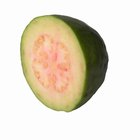
How to Peel Guava

How to Cook Strawberries

How to Cook Agar-Agar Jam
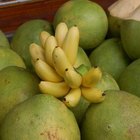
Foods From Rainforest Plants
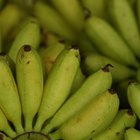
List of Tropical Fruits

Information About the Orange Fruit

How to Cook Papaya

Is Eating a Banana With Brown Spots Bad ...

How to Make Soursop Juice

Places to Pick Wild Blueberries in ...

Types of Greek Fruits & Vegetables

How to Make Carob Juice
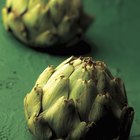
How to Parboil Artichokes

Why Are Fruits Important?

How to Juice Kiwi Fruit
References
Writer Bio
Based in Los Angeles, Lisa Finn has been writing professionally for 20 years. Her print and online articles appear in magazines and websites such as "Spa Magazine," "L.A. Parent," "Business," the Famous Footwear blog and many others. She also ghostwrites for mompreneurs and business owners who appear regularly on shows such as Ricki Lake, HGTV, Carson Daly and The Today Show.